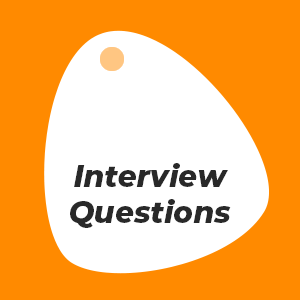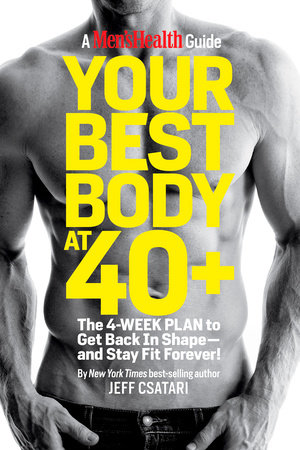
Personal trainers are able to build a thriving business online if they know how to write well and promote themselves through the use of their blogs. List posts are the most popular type of blog. They are great for explaining complex topics. You can also promote other companies by including your own links. These blogs can also be used to create a fitness community.
Hannah and Fitness
Hannah Hassan is the owner of Hannah and Fitness and has been a personal coach since 2015. Hannah has been a personal trainer since 2015. She is certified by the National Academy of Sports Medicine, National Athletic Trainers Association and has extensive experience with corrective exercise and movement optimization. Hannah's blog features easy-to-follow recipes and fun fitness trips. Her fitness philosophy combines strength training with flexibility training.

TS Fitness
TS Fitness is a personal training studio in New York City that focuses on empowerment, education, and community. Because of the small classes, individuals can get individual attention. This is a great option for individuals who are afraid to go to larger gyms. The studio offers both private training and group fitness classes.
David Kingsbury
David Kingsbury's blog provides great tips and tricks for weight loss. He is aware that nutrition plays a crucial role in weight loss. His meal plans focus on variety and macronutrients. His recipes are delicious and feature lots of fruits, vegetables, and other ingredients.
Ralph Roberts
If you've been reading blogs from personal trainers, you know it's a great way for you to share your thoughts and ideas. Ralph Roberts, a seasoned professional who lives by what he preaches, is an example of this. His content is informative, helpful, and simple to understand. It is simple to follow his blog and take action with his approach.
Ben Greenfield
If you're looking for a motivational speaker who can help you lose weight and get fit, you've come to the right place. Ben Greenfield's personal trainer blog is filled with tips and techniques for optimizing your health. He is an experienced trainer in the science behind nutrition and exercise. His writing is both informative, and easily understood. His best tips and tricks for maximising your results are shared by him.

Dorothy Beal
Dorothy Beal has been an inspiration runner and fitness blog. She was once overweight and deterred from running, but today runs over 30 miles a week and has appeared on the covers of fitness and running magazines. Her blog shares her love of running and her tips for marathon training. She also has playlists to help you get moving.
FAQ
What is exercise good for?
Exercising helps you lose weight, build muscle mass, increase energy levels, reduce stress, and improve sleep quality. Exercise is good for your mood, self-esteem, productivity, and heart health.
Is it safe for me to exercise in cold temperatures?
Exercise outside whenever possible. The air temperature isn't the only factor determining whether it's safe to exercise outdoors. Also, visibility, wind speed and humidity all play a significant role. Layers of clothing are recommended to protect against wind chill and rain when exercising outdoors in inclement weather.
How Can I Get Started With Fitness?
Start small. Begin by taking 10 minutes each morning to walk around the block. This will allow you to learn the basic movements and give your body time to adjust to the new routine. You can then add more steps into your daily exercise routine once you have learned this simple form.
Statistics
- Globally, 28% of adults aged 18 and over were not active enough in 2016 (men 23% and women 32%). (who.int)
- Adolescent girls were less active than adolescent boys, with 85% vs. 78% not meeting WHO recommendations of at least 60 minutes of moderate to vigorous intensity physical activity per day. (who.int)
- In 2018, the World Health Assembly agreed on a global target to reduce physical inactivity by 15% by 2030 and align with the Sustainable Development Goals. (who.int)
- Globally, 81% of adolescents aged 11-17 years were insufficiently physically active in 2016. (who.int)
External Links
How To
How to burn belly fat faster
Belly Fat is often thought of as a problem when trying to lose fat. It's actually a good thing, in fact. It's the amount of fat stored around your stomach that protects your organs from getting damaged. Let's find out how to lose belly fat quickly.
The main factors that contribute to our body fat accumulation are stress and inactivity. Cortisol hormone is stimulated by stress, which causes us to feel constantly hungry. Cortisol increases insulin levels in our blood. The excess calories are stored as fat by insulin. An increased appetite can be caused by a lack of sleep. These extra calories can easily be lost through exercise.
There are many ways you can reduce belly fat. You can choose to try any of these options, depending on your budget. These are some great tips to help you lose belly fat fast.
-
Try to eat less food. You should eat smaller meals throughout the day than you would if you ate three big meals. You'll eat fewer calories this way.
-
Drink plenty of fluids. Water flushes out toxins and keeps you hydrated. You won't overeat if you drink water before you eat.
-
Avoid eating unhealthy snacks. If you're looking for quick fixes, snack foods like chips, cookies, candies, etc. It might sound tempting. These fattening treats are best avoided as they have too many empty calories and sugar. Instead, opt for healthy alternatives such as fruits, vegetables and whole grains.
-
Three times per week, strength training is recommended. Strength training helps build muscle mass, which means that you can burn more calories even when you are resting. Strengthening your bones, muscles as well ligaments, joints, tendons, heart and lungs.
-
Walk or stretch regularly. Stretching helps to improve flexibility and mobility, which reduces back pain. Walking is great for burning calories, especially brisk walking for 30 minutes.
-
Reduce alcohol intake. Reduce alcohol intake. Alcohol is a waste of calories and has no nutritional value.
-
Slowly lose weight. To lose weight, the first step is to determine what your current weight. Then calculate your ideal weight by adding 5% to 10% of your total body weight. Once you have calculated your target weight, start reducing calorie consumption by 500-1000 calories daily until you reach your goal.
-
Avoid processed foods. These foods are high in salt, sugar, preservatives, and other harmful ingredients. Processed foods are often very convenient but don't provide enough nutrients to keep you healthy.
-
Don't skip breakfast! A good breakfast can improve concentration, memory, as well as energy level. Breakfast should include protein (like eggs), fiber (like oats), and complex carbohydrates (like oatmeal).
-
Have regular bowel movements. Constipation or irregularity can lead to gas and bloating. To prevent this, drink plenty of water and increase fiber intake.